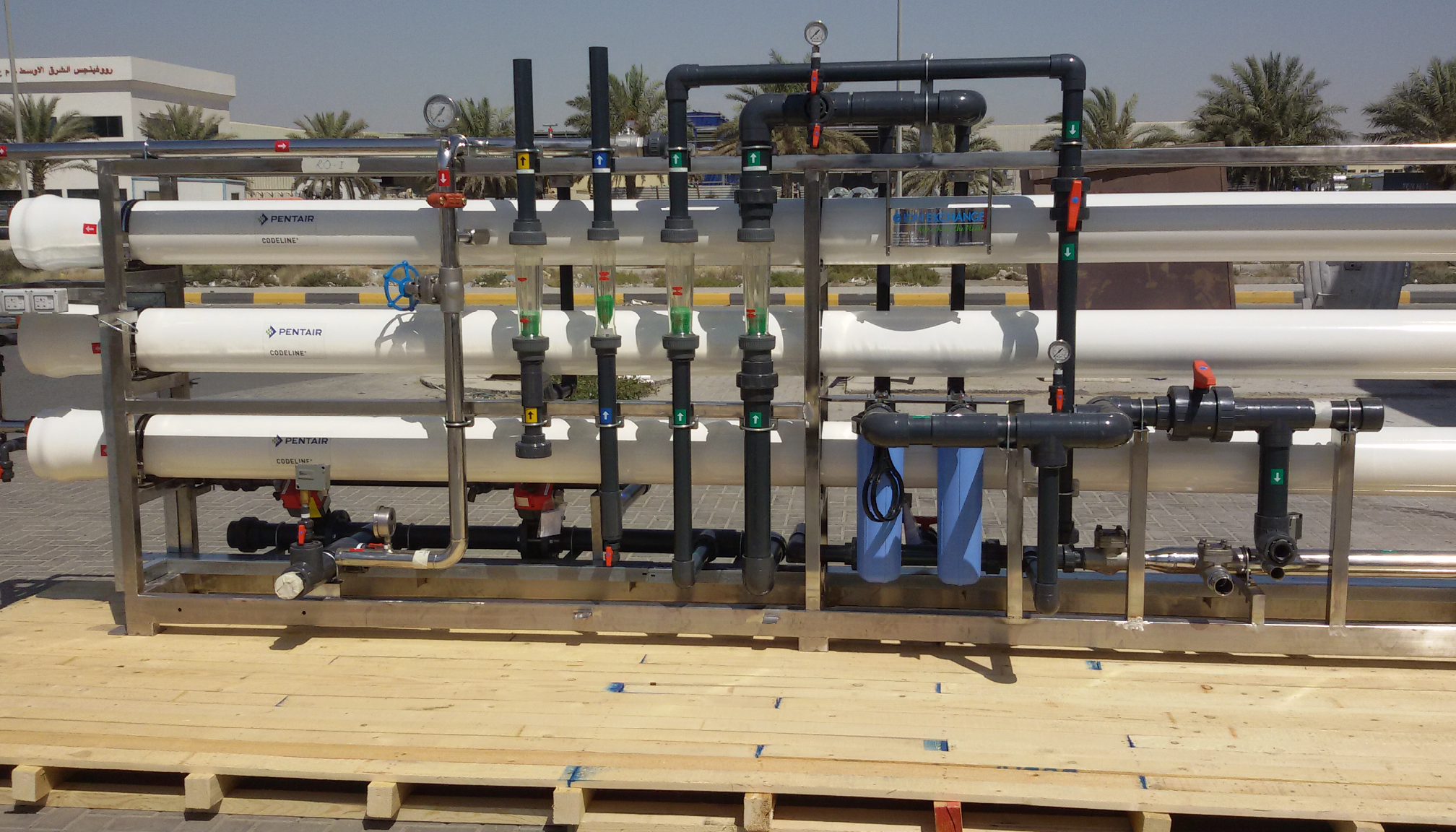Embracing Seawater Desalination Technology with Ion Exchange: Leading Desalination Plant Manufacturers
Freshwater is essential for our planet, but it’s becoming scarcer and more polluted. With growing populations, shifting water usage, and the impact of climate change, our freshwater sources are under threat. Seawater desalination is a crucial solution for removing salts and impurities. It can help address water scarcity by providing a viable and dependable source of clean water. According to the World Health Organization, over 2 billion people still lack access to safe drinking water, highlighting the urgent need for innovative solutions like desalination.
Desalination: A Definite and Infinite Water Source
Traditional sources of raw water like rivers, bore wells, open wells, and lakes are running low, facing mounting pressure due to escalating demand from both industries and communities. An alternative source of water supply is the ocean. Desalination technology has made significant strides over the last three decades, rendering seawater a dependable and essentially boundless source of fresh water through desalination processes. Various desalination methods are in widespread use globally.
According to a report by the International Desalination Association, global desalination capacity reached 95 million cubic meters per day in 2020, highlighting the increasing significance of seawater desalination as a water supply solution.
What are the Advantages of Seawater Desalination?
Seawater desalination comes with numerous benefits, making it a valuable solution to tackle water shortages and ensure a dependable supply of clean water worldwide.
- More Water Choices: Seawater desalination offers a sustainable and dependable source of fresh water, reducing our reliance on limited sources like rainwater and underground water.
- Better Water Quality: The process produces top-notch freshwater that meets strict drinking water standards.
- Environmentally Friendly: By decreasing the need to tap into underground or surface water, seawater desalination can help safeguard natural environments and lessen the impact on ecosystems.
- Resilience During Droughts: Seawater desalination provides a water source that’s resistant to droughts, which is crucial for both communities and industries.
- Boosting the Economy: Desalinated water is suitable for various purposes (such as cities, industries, farms, and more), promoting economic growth and enhancing people’s quality of life.
Ion Exchange Leading the Way in Sea Water Desalination
Ion Exchange was the first to realize that because there wasn’t enough fresh water, industries would need to use other sources like seawater. As a result, in 1997, they took the initiative to establish India’s largest seawater reverse osmosis (SWRO) plant at the Sikka thermal power station in Gujarat Board. Furthermore, they designed a seawater desalination plant with a capacity of 1100 m3/h for a government petroleum refinery in Chennai. Additionally, they executed a seawater reverse osmosis (SWRO) desalination facility for Simhapuri Power Ltd. in Nellore, Andhra Pradesh, as part of a 2 x 1400 m3/hr pretreatment, 3 x 50 m3/hr reverse osmosis, and 2 x 60 m3/hr mixed bed project.
Ion Exchange also received a repeat order from Gujarat Heavy Chemicals Ltd. for a 2.4 MLD desalination plant, which included 755 m3/hr pretreatment and a 100 m3/hr SWRO system. Additionally, we successfully commissioned the largest SWRO plant, with a capacity of 19.8 MLD (3 x 275 m3/hr) at Vallur, Chennai, for the 3 x 500 MW thermal plant of NTPC Tamil Nadu energy company, a joint venture of National Thermal Power Corporation and Tamilnadu Electricity Board.
In 2010, we constructed a 26.4 MLD plant for Chennai Petroleum Corporation, marking the largest facility in India’s industrial sector. For the past two decades, Ion Exchange has remained at the forefront of seawater desalination, utilizing popular technologies such as Membrane and Thermal solutions.
Membrane Solutions
- Reverse Osmosis: Reverse osmosis (RO) is a method that uses special filters to turn seawater into freshwater by pushing it through special membranes. These membranes keep the salt out. RO is easy to expand for more water and can use less power if we add energy-saving systems. But it’s important to clean the seawater first, so the filters work well. With energy-saving systems, we can use 30 to 40 percent less power. So, RO is a good way to get fresh water from the sea.
- Electrodialysis: Electrodialysis is a technology that uses special membranes and electricity to separate salty stuff from seawater, and it’s not just for making drinking water. This process can also be used for making salt, taking the salt out of soy sauce, and even recovering useful stuff from wastewater with salt in it. So, it’s not just about drinking water; it has many other useful applications too!
Thermal Solutions
The thermal process mainly uses three different technologies: – Multi-Stage Flash Evaporation (MSF), Multi-Effect Distillation (MED), and Mechanical Vapor Compression (MVC). All three processes are equipped with condenser tube bundles, which are energy-efficient and adaptable to different heat sources.
- Multi-Stage Flash Evaporation (MSF): MSF involves heating seawater in successive stages to evaporate water and collect distilled water. It operates at a higher temperature range of 90 to 110°C.
- Multi-Effect Distillation (MED): MED uses multiple evaporation stages at lower temperatures to minimize energy consumption. It is highly reliable, adaptable, and has low maintenance costs.
- Mechanical Vapor Compression (MVC): MVC relies on compressing vapor to evaporate water, making it a reliable and simple-to-operate technology.
Desalination plant manufacturers have been at the forefront of implementing these ion exchange-based technologies, making seawater desalination an increasingly viable and sustainable solution for freshwater production.
In conclusion, seawater desalination technology, with the contributions of ion exchange-based processes like Membrane and Thermal solutions, offers a promising solution to combat water scarcity. It provides a reliable source of high-quality freshwater, reduces environmental impact, enhances drought resilience, and supports economic growth. As the demand for freshwater continues to rise, embracing these technologies is crucial for a sustainable future. Desalination plant manufacturers play a pivotal role in making this vision a reality.




